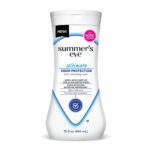New Study: Toxic Phthalates Declining in Cosmetics Thanks to Consumer Demand
Campaign for Safe Cosmetics’ Advocacy Campaigns Behind Changing Consumer and Industry Behavior
FOR IMMEDIATE RELEASE: January 21, 2014
San Francisco—Exposure to certain toxic phthalates has substantially decreased in the American population according to a study led by researchers at UC San Francisco and published today in the journal Environmental Health Perspectives.
Study authors suggest that the decrease may be due to a federal ban on phthalates in toys, as well as cosmetics companies moving away from the use of these chemicals in response to advocacy efforts led by the Campaign for Safe Cosmetics. Levels of some “regrettable substitution” phthalates are on the rise, however, including one that was recently added to California’s Proposition 65 list of chemicals known to cause cancer, birth defects or reproductive toxicity.
“Kudos to the millions of conscientious consumers whose concerns about phthalates in kids’ toys and cosmetics are now being credited with helping to decrease the levels of phthalates in people,” said Janet Nudelman, policy director at the Breast Cancer Fund and co-founder of the Campaign for Safe Cosmetics, which was established in 2004 out of concerns about the presence of phthalates in personal care products.
Phthalates are industrial chemicals, which soften plastics that are used to make common consumer products including fragrances, cosmetics, plastics, and building materials. Phthalates are endocrine-disrupting chemicals; exposure has been linked to early puberty, a risk factor for later-life breast cancer; reproductive harm in males; DNA damage to sperm and decreased sperm counts; and asthma.
Due to their ubiquity in common consumer products and potential to harm reproduction, phthalates have long been a target of state and federal legislative and market-based advocacy campaigns. In 2008, the Breast Cancer Fund led a national campaign that resulted in a Congressional ban on six phthalates in children’s toys.
That law permanently banned three phthalates: DEHP, DnBP (also abbreviated as DBP) and BBzP. According to the study, the levels of all three have gone down in people. Three other phthalates—DnOP, DiDP, and DiNP—were provisionally banned pending further study. Exposures to these phthalates have increased. Of particular note is exposure to DiNP, which increased nearly 150 percent. DiNP, which was recently added to California’s Proposition 65 list of carcinogens, is widely used to replace DEHP in plastics.
“Trading one toxic chemical for another in an endless and costly parade of regrettable substitutions is unacceptable,” said Cindy Luppi of Clean Water Action, a co-founder of the Campaign for Safe Cosmetics. “It’s time for strong laws and corporate policies that make safe products the industry standard.”
Consumer pressure has led more than 1,000 cosmetics and personal care companies to remove some dangerous chemicals, including phthalates, from their products. A 2008 report by the Campaign for Safe Cosmetics found a marked decline in the use of DEHP and DnBP by the cosmetics industry, compared to the findings of a 2002 Campaign study, which reported 72 percent of shampoos, deodorants, fragrances and other products contained these and other phthalates. Not surprisingly, the study also found a drop in levels of DEHP and DnBP in people.
“Women have historically had higher levels of phthalates in their bodies than men, so the steep decline of certain toxic phthalates in women is a good sign,” said Alexandra Scranton, Director of Science and Research at Women’s Voices for the Earth. “However, we remain concerned that manufacturers may be swapping out high profile toxic phthalates for less well-known phthalates, meaning the potential for harm remains real and more research must be done to protect public health.”
The study, “Temporal Trends in Exposure to Phthalates: Findings from the National Health and Nutrition Examination Survey 2001-2010,” published online today in Environmental Health Perspectives, reports on trends from 2001 to 2010, noting exposure to eight phthalates among 11,000 people who took part in the National Health and Nutrition Examination Survey (NHANES) conducted by the U.S. Centers Disease Control and Prevention.
“We commend the researchers for this excellent study, which reinforces the important role policy and market decisions can have on reducing the levels of unsafe chemicals in people and protecting public health,” said Nudelman. “Our campaigns to encourage companies to make safer products and to convince the government to pass health-protective laws have clearly paid off.”
###
MEDIA CONTACTS:
Margie Kelly, 541-222-9699, mkelly@breastcancerfund.org
Shannon Coughlin, 415-336-2246, scoughlin@breastcancerfund.org
The Campaign for Safe Cosmetics is a national coalition led by the Breast Cancer Fund, Women’s Voices for the Earth and Clean Water Action who, along with more than 175 nonprofit organizations, work to protect the health of consumers and workers by eliminating dangerous chemicals from cosmetics. Find out more at http://www.safecosmetics.org.





